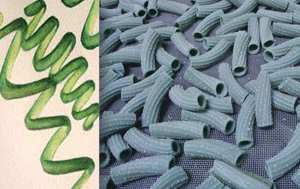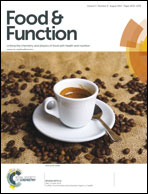Functional ingredients from microalgae†
Abstract
A wide variety of natural sources are under investigation to evaluate their possible use for new functional ingredient formulation. Some records attested the traditional and ancient use of wild harvested microalgae as human food but their cultivation for different purposes started about 40 years ago. The most popular species are Arthrospira (traditional name, Spirulina), Chlorella spp., Dunaliella spp. and Haematococcus spp. Microalgae provide a bewildering array of opportunities to develop healthier food products using innovative approaches and a number of different strategies. Compared to other natural sources of bioactive ingredients, microalgae have many advantages such as their huge biodiversity, the possibility to grow in arid land and with limited fresh water consumption and the flexibility of their metabolism, which could be adapted to produce specific molecules. All these factors led to very sustainable production making microalgae eligible as one of the most promising foods for the future, particularly as source of proteins, lipids and phytochemicals. In this work, a revision of the knowledge about the use of microalgae as food and as a source of functional ingredients has been performed. The most interesting results in the field are presented and commented upon, focusing on the different species of microalgae and the activity of the nutritionally relevant compounds. A summary of the health effects obtained together with pros and cons in the adoption of this natural source as functional food ingredients is also proposed.


 Please wait while we load your content...
Please wait while we load your content...